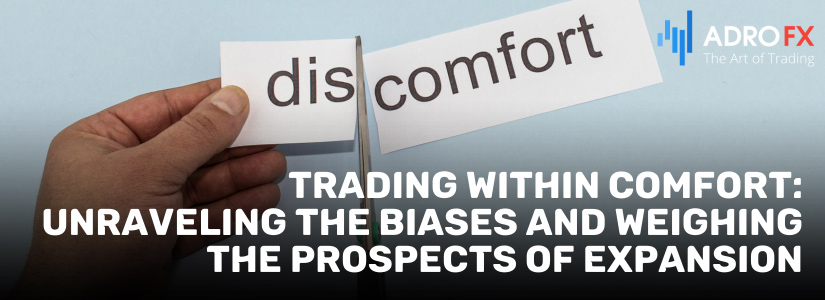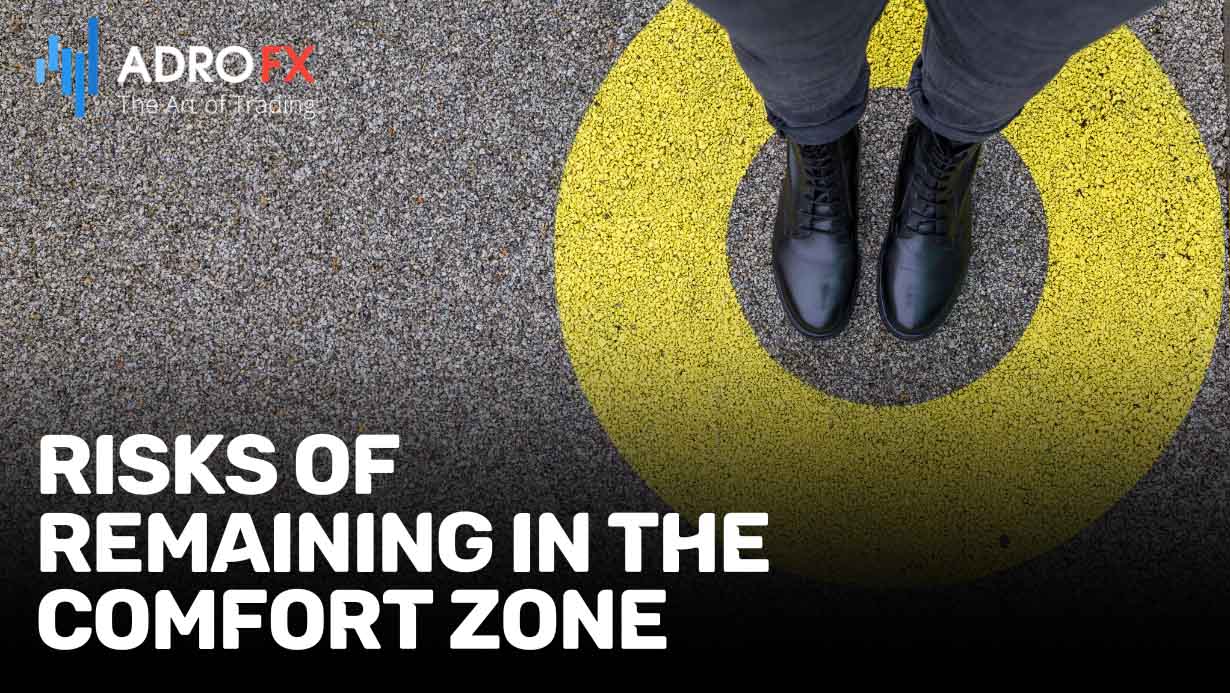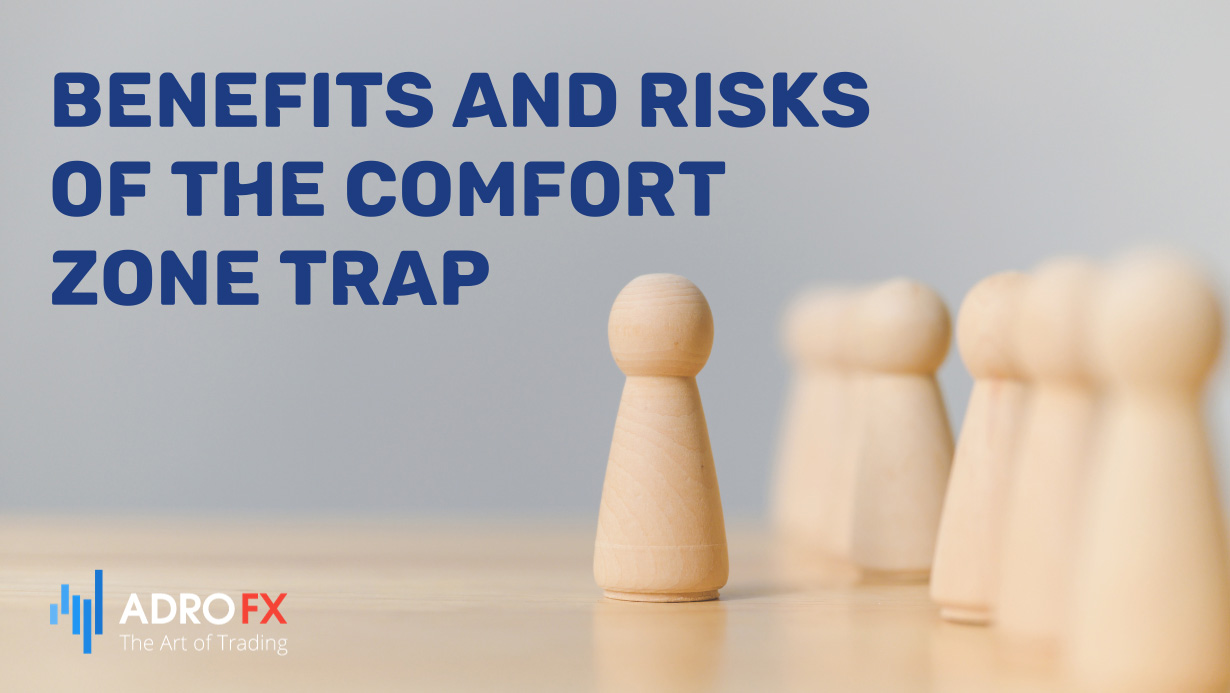Trading within Comfort: Unraveling the Biases and Weighing the Prospects of Expansion

Embarking on the exhilarating journey of day trading demands more than just market knowledge - it requires a nuanced understanding of psychological nuances, such as the comfort zone bias. This cognitive state, marked by a sense of ease and familiarity, can be both a trader's ally and adversary. In this article, we delve into the definition of the comfort zone bias, exploring its manifestations and consequences in the realm of day trading. As we unravel the risks associated with staying within this psychological cocoon, we'll also provide insights into recognizing the subtle signs of the comfort zone trap. Additionally, we'll guide you through strategies on how to broaden your comfort zone, emphasizing the importance of gradual changes, realistic goal-setting, and the embrace of discomforts. Finally, we'll explore the benefits and risks of the comfort zone trap, offering a comprehensive understanding of how traders can navigate this dynamic landscape for lasting success. Join us on this exploration as we navigate the intricacies of the trading world and uncover the keys to sustained growth and adaptability.
Definition of Comfort Zone Bias
The comfort zone bias is characterized by a psychological state in which an individual experiences a sense of ease and familiarity, typically because they are not being sufficiently challenged. Within a comfort zone, individuals tend to embrace the existing status quo and avoid situations that present significant challenges.
A concrete example of this bias can be observed in an experienced airline pilot who has successfully navigated flights without any issues over an extended period. Once in a comfort zone, the pilot may find it challenging to effectively handle unexpected emergencies.
Similarly, a student accustomed to consistently achieving top grades may see a decline in academic performance if minimal effort is invested in studies.
This bias is prevalent among traders and investors, illustrated by the experiences of seasoned individuals like Jim Chanos, a renowned short-seller on Wall Street. Despite past successes, including predicting the Enron collapse, Chanos faced losses and eventually closed his hedge fund after shorting popular companies like Tesla.

Risks of Remaining in the Comfort Zone
Staying within a comfort zone poses various risks, particularly for traders and investors. Some notable risks include:
- Familiarity Trap
A situation where excessive knowledge about a specific issue can lead to complacency. For traders, relying on a strategy for an extended period without adapting may cause them to miss potential opportunities. - Overconfidence Bias
The tendency to overestimate one's abilities. Overconfident individuals may assume they are the best in a certain field, leading to significant losses when market conditions change. - Fear Traps
Being in a comfort zone can result in fear and anxiety, especially when faced with monetary concerns. This fear may hinder individuals from making necessary decisions or taking calculated risks. - Repetition of Errors
Comfort zones may contribute to making the same mistakes repeatedly, leading to substantial losses in the market. Breaking out of this pattern involves acquiring new skills and exploring different trading strategies. - Nervousness and Emotional Stress
Staying in a comfort zone may lead to nervousness and emotional stress, particularly during challenging times. These emotional challenges can affect decision-making and contribute to significant losses in day trading.
In addition to these risks, other potential drawbacks of the comfort zone include stagnation, lack of growth, missed opportunities, and complacency. To mitigate these risks, individuals are encouraged to step out of their comfort zones, embrace new challenges, and continually seek personal and professional growth.
How to Identify the Comfort Zone Trap
Many individuals struggle with the challenge of not realizing they are trapped in a comfort zone bias. This is particularly relevant for day traders and investors who may unknowingly find themselves in this predicament. Here are key indicators that can help you recognize if you are caught in the comfort zone trap:
- Feeling Stagnant
One of the primary risks associated with the comfort zone trap is a sense of stagnation. Even if you are a successful trader, you might be lacking the necessary growth. For instance, consistently achieving a 20% monthly return may be commendable, but breaking away from your comfort zone could potentially unlock opportunities for a 30% return. If you sense a lack of substantial growth, it's a red flag that you may be ensnared in a comfort zone bias. - Fear of Failure
Another sign of a comfort zone bias is a persistent fear of failure. Many individuals remain stuck in their comfort zones because they find solace in their current performance, even when it falls short. The fear of experimenting with different market approaches can be a hindrance. For instance, if you exclusively rely on trend-following strategies, avoiding experimentation with approaches like scalping or reversals could be a symptom of the comfort zone trap. - Avoidance of Challenges
Recognition of a comfort zone bias becomes evident when you shy away from taking on new challenges. If you find yourself consistently comfortable trading the same financial assets with identical strategies, it's a sign of reluctance to step beyond your established boundaries. For example, if your focus is solely on stocks, branching out to explore other assets like cryptocurrencies and commodities might feel daunting. Avoiding experimentation with different trading strategies is another indicator. - Complacency and Lack of Motivation
Complacency, where you become overly comfortable with the status quo and resist change, is a clear signal of being in a comfort zone. A lack of motivation to explore new avenues or adopt different strategies is symptomatic of this bias. If you find yourself content with the current situation and unwilling to embrace change, it's likely that you are entrenched in a comfort zone.
By being vigilant for these signs, you can proactively identify and address the comfort zone trap, opening up opportunities for personal and professional growth in your trading endeavors.
How to Broaden Your Comfort Zone
While being in a comfort zone has its benefits, especially during periods of success, it can potentially lead to underperformance in the market. To foster growth and expand your comfort zone, consider the following strategies:
- Implement Gradual Changes
Address the risk of complacency associated with a comfort zone by introducing gradual changes to your trading process and strategy. If you already have a successful trading strategy, consider incorporating additional techniques. Experiment with alternative strategies during your free time using a demo account - a tool that provides access to the live market without risking your actual funds. - Set Realistic Goals
Establishing realistic goals is crucial in expanding your comfort zone. Ensure that your goals are realistic, measurable, specific, time-bound, and achievable. For instance, if your primary focus is on scalping, set a goal to explore pairs trading or trend-following within a specified timeframe. Avoid setting unrealistic expectations, such as aiming for a $1,000 return with a single trade or consistently generating income after only one month of trading. - Embrace Discomforts
While a comfort zone provides a sense of ease, it can lead to stagnation and hinder growth. Counter this by actively embracing discomforts in your trading career. Challenge yourself to learn new things and adopt different strategies. If you've become accustomed to generating a consistent 10% return every month, be willing to step outside that familiar territory to explore new avenues. - Avoid Complacency
Although feeling satisfied with your abilities is not inherently negative, complacency can have consequences. If you're accustomed to trading in a low-interest rate environment, for example, complacency may lead to losses when interest rates start to rise. Stay vigilant, continuously reassess market conditions, and be open to adapting your strategies to evolving circumstances.
By incorporating these strategies into your trading approach, you can actively work towards expanding your comfort zone, fostering adaptability, and promoting sustained growth in your trading endeavors.

Benefits and Risks of the Comfort Zone Trap
Finding oneself in a comfort zone trap can be a double-edged sword in the world of trading, offering both advantages and pitfalls.
Embracing a comfort zone often leads to increased resilience, particularly when a trader masters a well-functioning strategy. For example, proficiency in trend-following can yield consistent earnings over time, providing a sense of stability.
Moreover, the comfort zone tends to create a fertile ground for more trading opportunities. Familiarity with specific strategies and assets allows traders to identify and capitalize on favorable market conditions more readily, contributing to sustained success.
The comfort zone also nurtures confidence growth. Focusing on strategies one knows well fosters a sense of assurance in trading abilities, empowering traders to navigate the market complexities with greater self-assuredness.
Another advantage is the ability to overcome fear. Mastery of a trusted trading strategy within the comfort zone can act as a shield against the emotional responses that often lead to significant losses. Confidence in one's approach becomes a powerful tool in facing the uncertainties of the market.
However, the comfort zone comes with its own set of risks. Some traders may become overly focused on similar assets or industries, potentially limiting exposure to alternative opportunities. While specialization has its merits, it may result in missed prospects and challenges when market conditions undergo changes.
A notable risk is the temptation to forego in-depth research within the familiarity trap. Trading without comprehensive fundamental and technical analysis can pose significant challenges. To mitigate this risk, traders should prioritize thorough research and risk management in their trading strategy.
Furthermore, remaining within a comfort zone may expose traders to the risk of lacking emotional control, especially when faced with unfavorable market conditions. Emotional reactions, such as overtrading, neglecting risk management, and experiencing distress in adverse situations, can undermine trading success. Maintaining emotional discipline becomes essential for effective navigation through the market's ups and downs.
In essence, while the comfort zone offers stability and familiarity, traders must strike a delicate balance between leveraging these advantages and embracing adaptability to successfully navigate the dynamic landscape of financial markets.
Final Thoughts
In summary, successfully traversing the intricate landscape of day trading demands a sharp awareness of the comfort zone bias and its potential drawbacks.
While the comfort zone provides a reassuring sense of security, it can metamorphose into a trap for day traders, impeding progress and exposing them to unforeseen risks. The pivotal step lies in recognizing the subtle signs of the comfort zone trap, enabling traders to liberate themselves from its limiting constraints.
Although remaining within the cocoon of one's comfort zone may offer immediate solace, it comes at the expense of overlooked opportunities and restricted personal and financial growth. The perils associated with complacency and an aversion to change pose the threat of stagnation, potentially leading to financial setbacks.
In conclusion, the journey through the dynamic world of day trading is inherently fluid, with success often residing just beyond the familiar confines of one's comfort zone.
By embracing the acknowledgment of risks linked to the comfort zone bias, discerning the indicators of the comfort zone trap, and actively pursuing avenues for personal and financial development, day traders position themselves for enduring success in the perpetually evolving realm of financial markets.
About AdroFx
Established in 2018, AdroFx is known for its high technology and its ability to deliver high-quality brokerage services in more than 200 countries around the world. AdroFx makes every effort to keep its customers satisfied and to meet all the trading needs of any trader. With the five types of trading accounts, we have all it takes to fit any traders` needs and styles. The company provides access to 115+ trading instruments, including currencies, metals, stocks, and cryptocurrencies, which make it possible to make the most out of trading on the financial markets. Considering all the above, AdroFx is the perfect variant for anyone who doesn't settle for less than the best.









